It’s no secret that the Nashville Predators have an offense problem. The forward scoring is consistently underwhelming, and nothing seems to be able to fix it. The number of players considered to be high-profile scorers who have come in and bit the dust is astounding. Even some with the team currently have shown loads of skill, but continue to underperform their analytical numbers and what they’re “expected,” like expected goal (xG) models like Evolving-Hockey. Fans and even the front office have stated their discontent with the production. However, there hasn’t been an actual solution given out, other than continuing to bring in players and hoping they’ll change the culture. It all leads me to believe that there is an overarching problem, but how can we identify it, and where does it start?
The Coaching
Barry Trotz, Peter Laviolette, and John Hynes are on the shortlist of Predators head coaches since the team’s inception. They all have one thing in common: defense. They’re all defense-first coaches that insist on stopping high-danger chances. At face value, this may seem like a good thing. Of course, everyone wants a coach that emphasizes keeping the puck out of the slot. However, it comes at a cost for the players, especially in Laviolette and Hynes’ systems. Per heatmaps from HockeyViz, it is excruciatingly clear that high-danger chances are not emphasized on the offensive end of the spectrum, which will stifle player production. Here is Hynes’ 2020-21 heatmap in the offensive zone:
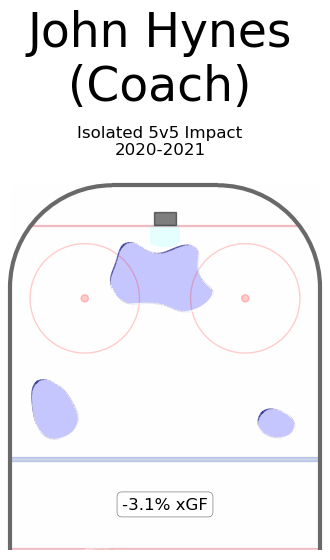
Blue in the defensive zone and a negative of expected goals against (xGA) is good. It means that the opposition isn’t getting a substantial amount of high-danger chances against. The problem lies with the blue in the offensive zone (top) and negative expected goals for (xGF), which indicates a low amount of high-danger chances for the attacking team. The Predators struggle with slot shot generation by both the eye test and the analytics, too.
We can look at Laviolette’s heatmaps here, too. In this one, it’s the Predators Presidents’ Trophy-winning season.
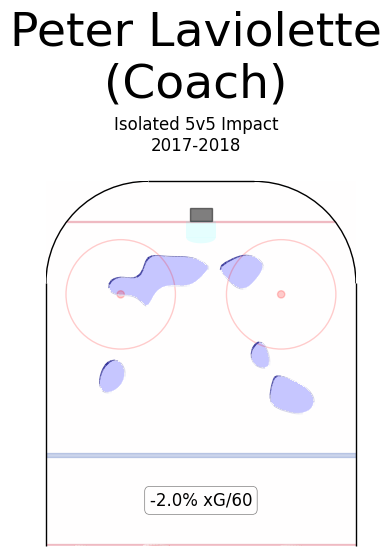
Again, the Predators weren’t getting good shot quality with Laviolette, just as they aren’t under Hynes. It was tough to watch during the last year or so of his tenure, where the offense was exclusively dumping and chasing the puck, feeding it to the point, and letting them fire away. It did absolutely nothing for the forwards, and the point totals reflected that. They played under his system for so long that they had a hard time adjusting to Hynes’ because it was just repetition at the time of Laviolette’s firing. It was ingrained in their heads to play by the book, and if the game didn’t go by the book — newsflash: it rarely ever does — just dump the puck in and figure it out.
Trotz is known for being a defense-first coach as well. His tenure with the New York Islanders has led to a reputation around the league of strong yet dull, defensive hockey. The offense heatmaps are essentially average, but it’s no secret that his system does affect forward production.
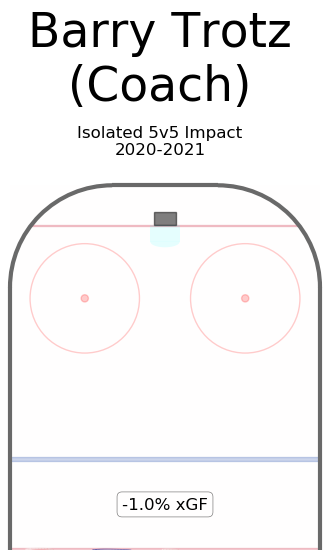
All of this is shown through players like Mathew Barzal regressing pretty heavily in offensive analytics and even point totals since Trotz started his career in New York. Of course, he is a great coach; he is beloved by Predators fans everywhere and has led the Islanders on multiple deep playoff runs. However, it’s no secret that his system has affected his team’s ability to create and produce substantial offense.
How Do They Fix It?
The answer is pretty obvious:
- Hire a coach that is more offensively inclined.
- At the very least, hire someone that has average impacts on both ends of the ice.
- Hire coaches who don’t rely on the dump and chase tactics and instead, rely on possession zone entries and keep the puck for as long as possible. It’s the key thing the Predators’ front office should learn from the playoff series with the Carolina Hurricanes. They got outcoached and got dominated consistently because the forwards on the Hurricanes knew how to cycle the puck, keep possession of it, and make the right plays to generate excellent chances with a high shot quality.
Hynes is not the answer. As of right now, he’s simply a placeholder for the individual that is. The system designed by these coaches is effective and has worked before, but it’s a new game. Hockey today is a speed and skill-oriented game that thrives on keeping the puck for as long as possible. Possession is the common denominator with all of the best teams in the league. Medieval strategies like the dump and chase, while effective in some circumstances and with some lines, don’t help the attacking team maintain the puck and it’s only good when the unit in question can cycle the puck exceptionally well. As we saw in the most recent playoff series, the Predators are not one of those teams.
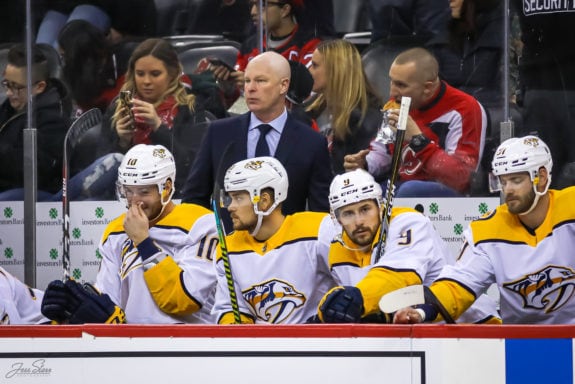
The Predators are in a weird spot with Hynes having one more year on his contract and the perpetual state of mediocrity that they have entered. Although, it doesn’t mean that there are excuses for making the same mistakes when hiring a coach the next go around. This leads me to my second point: the problems stem higher up than the men behind the bench.
New Philosophy in the Front Office
David Poile has been an NHL general manager for longer than many hockey fans have been alive. He’s the winningest general manager in NHL history, and his resume outside of that speaks for itself. However, fans have started to pick up on the glaring flaws with his approach to building a roster. Of course, he structured the roster that made it to the Stanley Cup Final, but that run was also fueled by obscene amounts of luck and unsustainably ridiculous goaltending.
The one knock on Poile is his trophy case being empty and having a resume that doesn’t include the words “Stanley Cup Champion” on it. It’s becoming more apparent that there are particular reasons for that. His building of the Predators roster focuses on goaltending and defense, which plays right into the hands of Trotz, Laviolette, and Hynes — and also not being able to draft a high-impact forward to save his life.
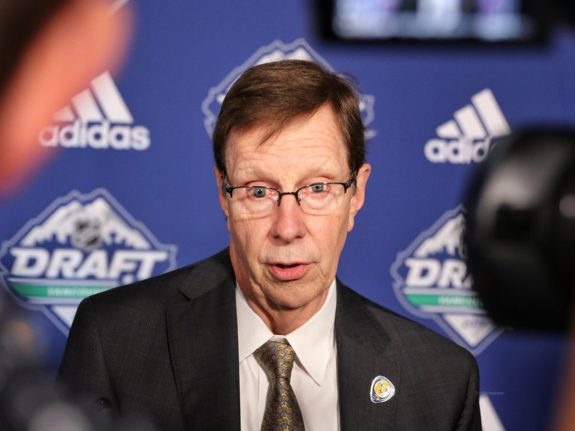
The highest goal-scoring regular season was posted by Viktor Arvidsson, a forward that Poile drafted, but it’s still the lowest total out of any NHL franchise. Even the Vegas Golden Knights have a higher franchise record thanks to William Karlsson. Outside of David Legwand, there are no Predators forward that hold any franchise record in a single season that were drafted by the franchise. Even with Legwand being the guy who has all the records now, those will be shattered by one of Roman Josi or Filip Forsberg, one of which is a defenseman, and the other is not a forward the Predators drafted.
The Predators have the third-lowest franchise record for points in a single season among the 31 NHL clubs, which Paul Kariya set. If we look at forwards drafted by Poile, they would be last by a long shot, as the first forward to be drafted by Poile doesn’t even crack the top 10 where the minimum is 64 points. The Predators have yet to see a point-per-game season by both a defenseman or a forward.
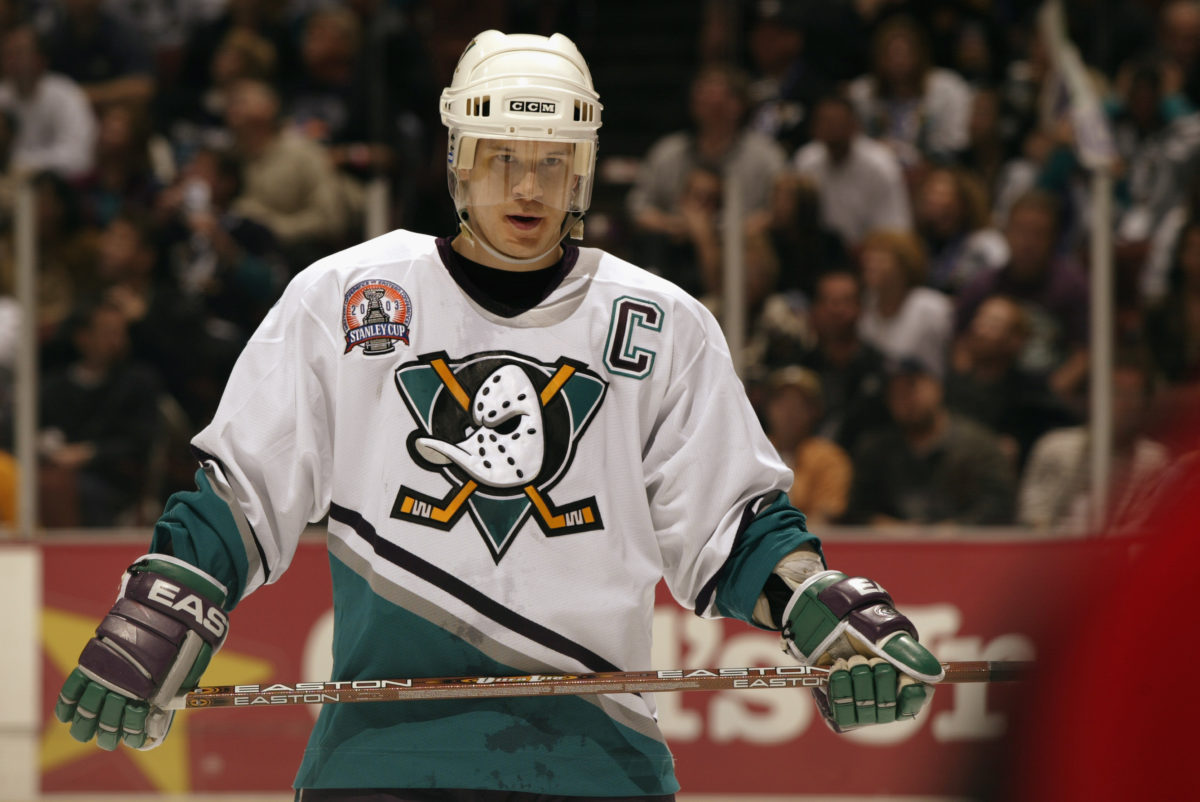
The constant play to squeak into the playoffs has agitated fans long enough. If the Predators are going to truly contend for a championship, they need to figure out how to fix all of these scoring woes. It’s not by bringing in high-caliber free agents as they did with Matt Duchene, even though he has been a bit unlucky due to Hynes’ system and deployment. It doesn’t solve the overarching problem: the general manager and scouting team not being able to pick out diamonds in the rough or draft potential franchise players. Every champion has drafted forwards well, and even if their systems didn’t enforce offense or firm puck possession like a lot of the best teams in the league today do, their forwards still knew how to score an ample amount of points.
How Can It Be Fixed?
There are three parts to fixing this massive organizational flaw in my mind. The first is by creating an emphasis on the use of analytics and ramping up that department. The best teams in the league are using analytics to their advantage, whether in the draft, free agency, or trade deadline. They’ve found what works and are using it consistently to make good deals or find players that could be considered studs in the later rounds. The moves that the Predators’ front office has made over the last few seasons lineup-wise, trade-wise, draft-wise, and more, are hardly analytics-based. Hockey is a very random sport, and things can happen that numbers can’t quantify. However, the best way to create less randomness is by using and finding players with underlying skill sets that numbers can show.
Latest Predators Content:
- Looking Back on Tom Fitzgerald’s Nashville Predators Tenure
- 9 NHL Teams That Missed in Free Agency
- Get to Know New Nashville Predator Jonathan Marchessault
- Peter “Foppa” Forsberg: A Biography
- Get to Know New Nashville Predator Steven Stamkos
The second part of the fix is changing the overall philosophy surrounding the team. It ties into my first and last parts, but the emphasis on defense and goaltending has worn out its welcome. Fans don’t want to watch defense-first hockey. They want to watch Josi take it up the ice at full speed and deke through multiple players and dish it to a guy in the slot. Fans don’t tune in to watch the trap. They tune in to watch Connor McDavid beat it. Does this mean that we should give away every good defenseman and goaltender, prospect or otherwise, from the system? No.
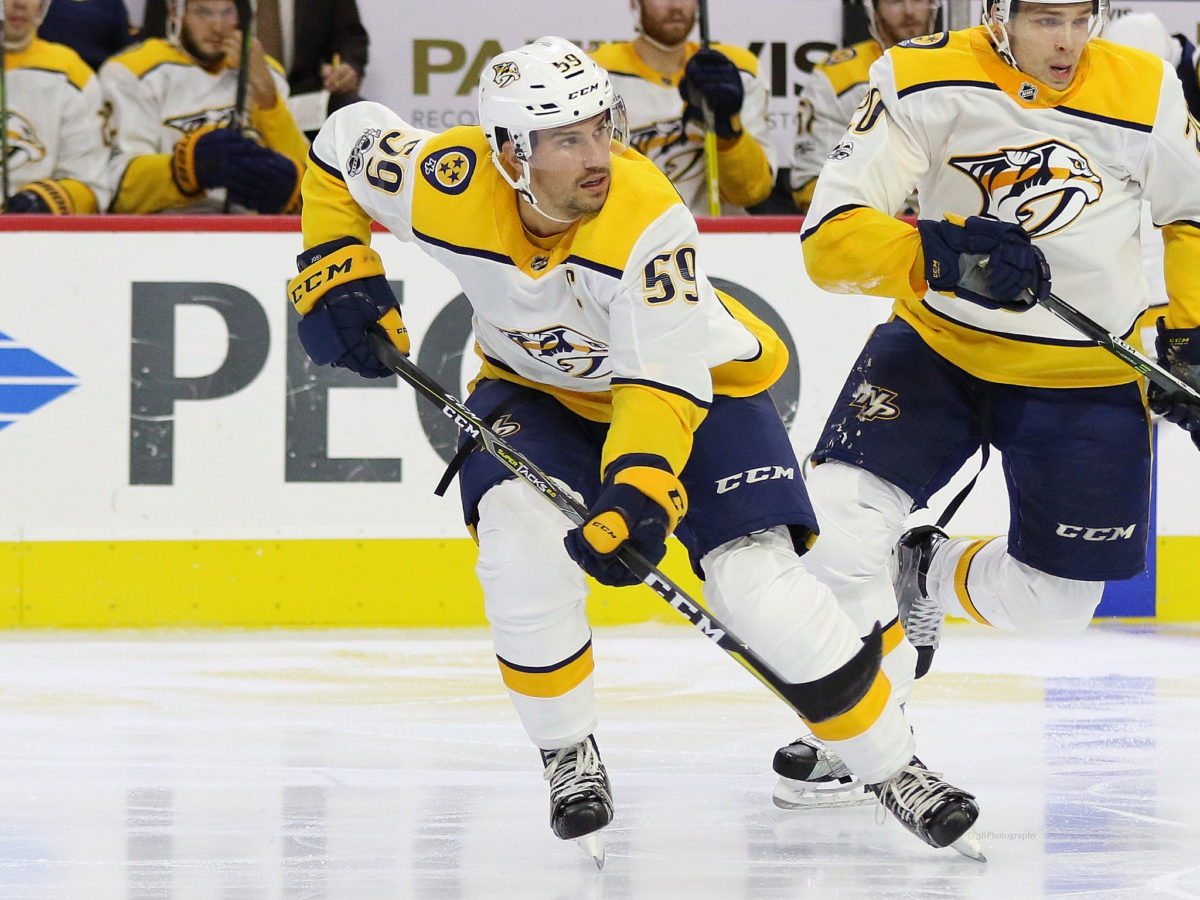
However, it means that, instead of focusing on the back end primarily in the draft, they should focus on finding forwards with skills that can be translated to the NHL.
The final point is the biggest one of them all, and it’s firing the general manager and scouting department. Some people may not like this, and others might rejoice that a writer has thrown out the idea that Poile’s time has run out. To me, it’s a reasonably simple game plan. If we want the philosophy to change, and we want to see differences in systems and shot-quality numbers, and the Predators coming out of the draft with the “winner” tag in terms of forwards, it starts from the top. It’s clear that Poile’s plan has not worked, and it’s clear that the ideologies of him and his scouting team are not going to change any time soon. All of this is no disrespect to them; it’s merely the idea that their insight has not worked until the Predators as a team are good scorers and high-danger chance generators.
The only way new ideas can change the franchise’s direction is by throwing the old ideas out the window. Of course, there are timeless ones, but when it comes to both scouting players and drafting in general, it’s super important to create room for new ideas.
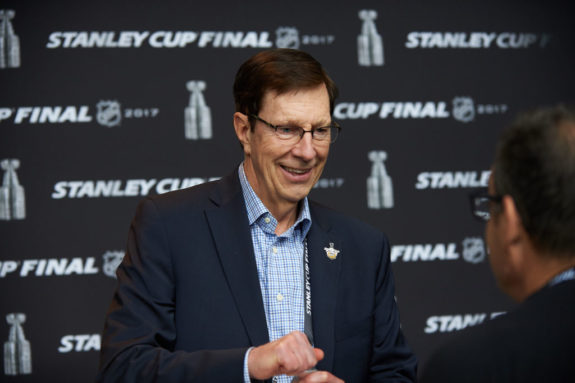
The Predators franchise as a whole is extremely stale in terms of scoring. It’s hard not to justify tearing it all down when the best players aren’t playing like themselves, and the best measure to avoid that — going to the net and getting shots in front — is not being utilized nearly enough. For the most part, it’s a callous brand of hockey to watch. It all trickles down in the end. The general manager works directly with scouting and coaching consistently, so therein lies your problem. I don’t think that any of this happens shortly, but we can wish. For now, Predators fans all across the nation(s) will have to watch Connor Bedard and Shane Wright in awe, hoping they get the opportunity to draft them in the next two seasons.